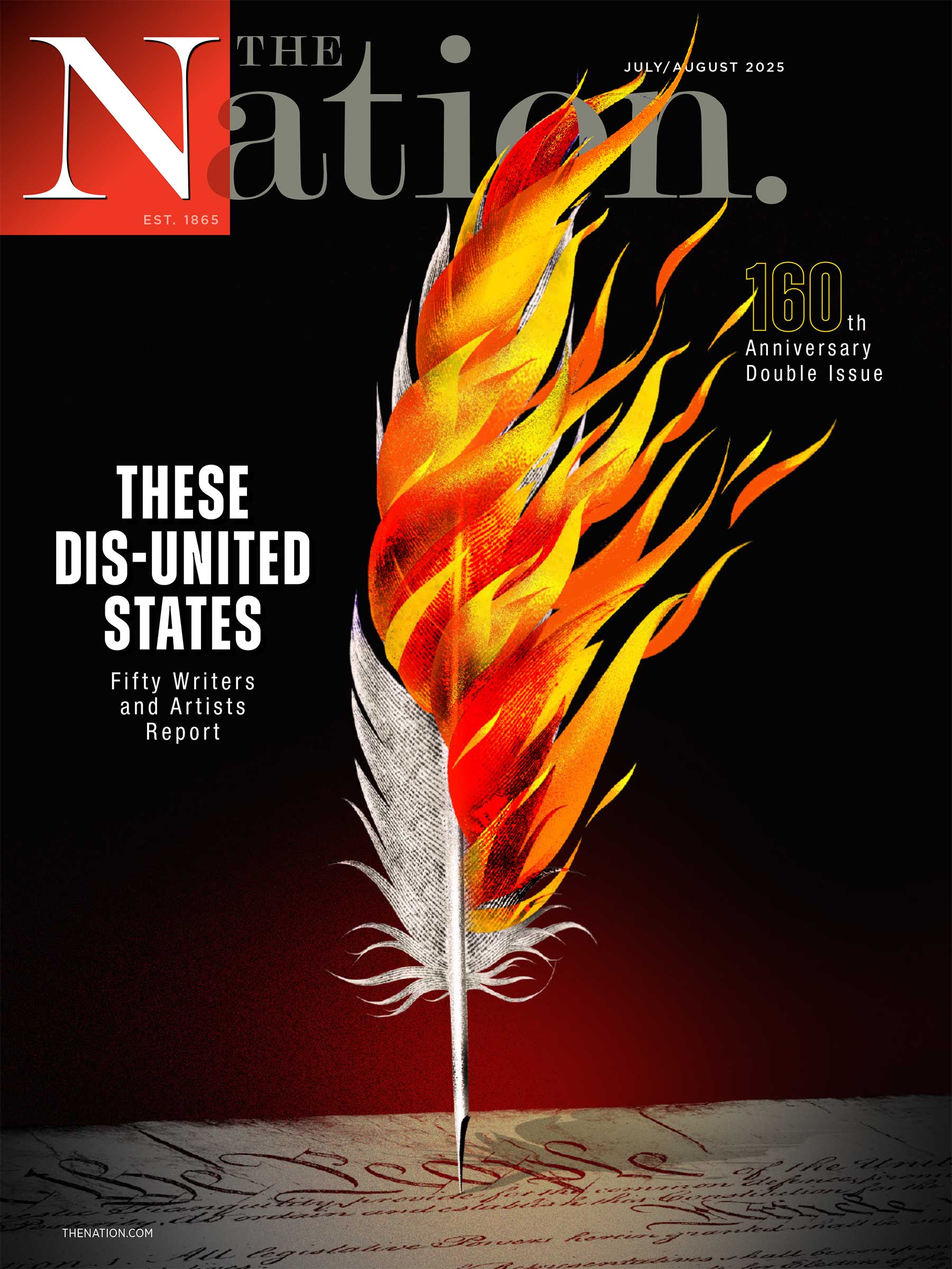Saving the worst for last, on the final day of the term the Supreme Court issued 5-to-4 rulings on school vouchers and drug testing that blow a huge hole in the wall of church-state separation and shrivel the privacy rights of students.
Since 1996 Ohio has provided tuition aid for Cleveland grade school students to attend private schools, special city or suburban public schools and individual tutoring classes. In the 1999-2000 school year, 96 percent of the students in this program went to religious schools. Nevertheless, the Supreme Court approved the voucher system (Zelman v. Simmons-Harris). Writing for the Court, Chief Justice William Rehnquist noted that the tuition aid went initially to the parents, who then endorsed the check over to the school. Because the parents could have chosen one of the public school programs, the “incidental advancement of a religious mission,” wrote Rehnquist, is not attributable “to the government, whose role ends with the disbursement of benefits.”
On its face, this is nonsense. The “achievement of a religious mission” is directly attributable to the state, which actually pays the funds to the religious institution; the parent is only a conduit who directs where the money will go. The declared purpose of these schools is religious indoctrination of students. The curriculums include prayer, and all subjects are taught in a religious framework. Providing the tuition money that makes it possible for these schools to enroll their students puts the government squarely in the business of achieving a religious mission.
Formally, the program was neutral, but in practice it was not. The amount of aid was too little for nonreligious private schools but more than enough for the low-cost religious schools, where the program paid for the full tuition. The overwhelming proportion of this money thus had to go to religious schools, which, of course, the Ohio legislature had to know. Moreover, if formal neutrality is the test, a program will pass muster even if all the money and students go to religious schools, so long as it has some secular purpose. Since such a purpose can always be produced, the door is wide open for massive state support of fundamentally religious activity.
The focus on choice ignores the point of the Establishment Clause of the Constitution. That clause is not designed to promote a choice between religious and nonreligious institutions, nor is there any right to such choice at state expense. The intent of the Establishment Clause is to avoid spending taxpayer money in a way that promotes religion and thus encourages sectarian rivalry. We had a great deal of such strife before 1787, and the clause was adopted to prevent this. Also, as Jefferson explained, no one should be “compelled to…support any religious worship, place, or ministry whatsoever…[even a] teacher of his own religious persuasion”; Madison, the father of the Bill of Rights, shared those sentiments.
Popular
"swipe left below to view more authors"Swipe →The decision will probably not result in many more voucher programs. There is a lack of state money for education and strong allegiance to public schools; studies by the government and other organizations do not support the claim that voucher programs substantially improve academic achievement. The decision will, however, produce many bitter religious fights. As soon as the decision came down, state and federal legislators introduced voucher legislation. There will also be conflicts over other programs, including challenges by religious groups to the more stringent provisions on church-state separation in state constitutions.
The Court’s drug testing decision is also more important for what it portends than for its immediate result. In 1989 the Vernonia, Oregon, school district instituted a drug testing program for student athletes. In 1995 the Court approved the program but stressed the special circumstances of the case: Vernonia had a serious drug problem in which athletes were the leaders of the drug culture; missed football plays and serious sports accidents had been attributed to drug abuse. The Court cautioned, however, “against the assumption that suspicionless drug testing will readily pass Constitutional muster in other contexts.”
That caution disappeared, however, when the Tecumseh, Oklahoma, school district found drugs on the campus, heard students talk about drug use and decided to test all middle and high school students who wanted to participate in competitive extracurricular school activities. Lindsay Earls, a member of the choir, the marching band, the Academic Team and the National Honor Society objected but, after winning in appeals court, lost in the Supreme Court (Board of Education of Independent School District No. 92 of Pottawatomie County v. Earls).
Writing for the majority, Justice Clarence Thomas ignored all the special circumstances of the Vernonia case and dismissed the absence of a demonstrated problem of drug abuse as unimportant. Because (1) students have a reduced expectation of privacy, (2) the intrusion is “negligible,” (3) the sanction (exclusion from extracurricular activities) is minor and (4) drug abuse is a bad thing, the program is acceptable. Any effort to link drug abuse to choir singing, the marching band or the Academic Team would have been ludicrous, and Thomas didn’t even try. On his reasoning, as long as the sanctions are minor, all students may be subjected to drug testing because the other factors he mentioned always exist.
Although the decision is far-reaching, its immediate impact is likely to be modest. Few schools routinely test even their athletes, and widespread testing is expensive. The decision underscores once again, however, that for the Supreme Court, the rights of young people are shredded when they walk through the schoolhouse gates.


